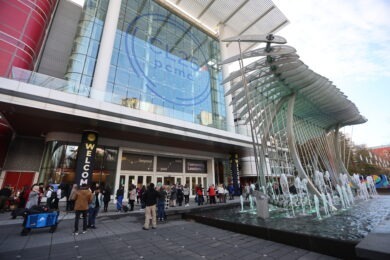Managing an event may not require rocket science, but successfully engaging with attendees does require manipulating the properties of neuroscience, the study of the nervous system, particularly the brain. In the last 10-15 years we have learned more about our thinking brain than in all of human history combined. Many of these discoveries have a huge impact on best practices for holding meetings and conferences, and, in turn, how we think about what it means to be engaged in a meeting setting.
1. Impact on Happiness and Creativity
When we are engaged, our frontal cortex releases dopamine (a pleasure hormone) which allows us to be more creative and causes an elevated perception of the world around us. This release makes us happier and more free in our exchange of knowledge—leading to better learning retention and more efficient networking. It can also create more effective conflict resolution and better emotional regulation, meaning productivity skyrockets where competing perspectives may have thrived in the past.
2. Emotional Contagion
The most emotionally expressive person in any given room will transmit their mood to everyone else in just 2 minutes. This is the conclusion Daniel Goleman reached in his book Primal Leadership: Realizing the Power of Emotional Intelligence. This means the tone of a meeting or event can change dramatically based on one person’s mood.
Creating a safe, positive environment that fosters collaboration is of utmost importance in meeting design. One way to ensure this is through open collaboration with an unbiased moderator or facilitator; someone who can represent the group as a whole while at the same time allowing them a voice.
3. Fight or Flight vs. Social Engagement
Neuroscientists have discovered that our brains are constantly either in a state of fight or flight or social engagement (a behavior known as Polyvagal Theory). If we feel important, free and comfortable, we let our guards down enough to fully engage in a meeting setting. Otherwise we tend to default to an acute stress response where we shut down emotionally and sometimes physically, unable to get important things done (let alone breathe or speak properly). Ice breakers, team building, and interactive entertainment can help break down barriers and create a fun, positive zone for learning and networking.
4. Storytelling
Storytelling stirs a wave of phenomena in the brain that creates more effective learning and communication. It triggers mirroring, which allows audiences to experience similar brain activity to the storyteller and each other and connect on a deep physiological level. It also creates neural coupling—a process in which the listeners relate the story to their own past experiences for greater connection.
This, in turn, allows the listeners to solve problems in new ways by looking at information in a way that draws on different areas of their existing knowledge. Speaker training can ensure your content experts provide information that weaves storytelling into the mix for greater learning retention and audience satisfaction.
5. Priming
Asking your attendees questions they might not necessarily have the answers to ahead of time can actually help them be ‘primed’ to learn better. Pre-testing or prompting with open-ended questions ahead of sharing new information gets the mind ready for better learning retention by providing the brain with an outline that we fill in with the details as we learn later.
Priming can also be useful in the event design phase. Before the event, incorporate quizzes, video sneak peeks into content, or simply poll your audience to see what they are most interested in learning. This is a great marketing tool and excuse to engage participants ahead of time to generate buzz and excitement.
As director of sales and marketing for Engagement Unlimited, Jenny Stanfield helps organizations and meetings be more engaging and maximize their potential. She continuously demonstrates her passion and advocacy for the meetings industry through her position as director of sponsorship for Professional Convention Management Association across Western Canada. She is also a proud 20 in their Twenties award recipient.




